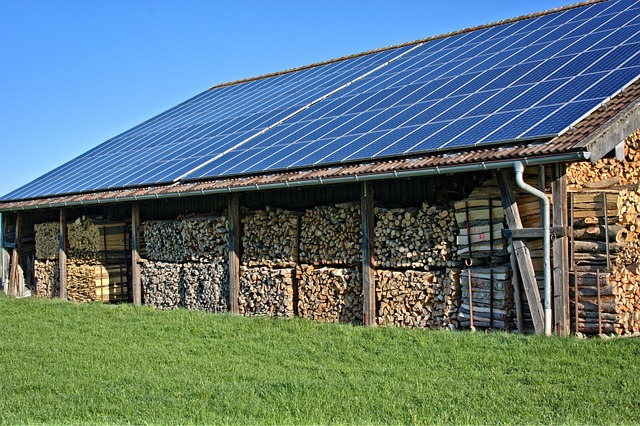Solar energy isn’t just for rooftops or pocket calculators anymore—it’s reshaping how we tackle daily life, travel, and global challenges. As the world shifts toward sustainable solutions, solar power has emerged as a frontrunner, offering both environmental and economic benefits. If you’ve ever wondered, “What can solar panels realistically power?” prepare to be amazed. Below, we explore five groundbreaking applications of solar technology that prove its versatility and transformative potential.

Why Solar Energy Matters Now More Than Ever
Climate change demands urgent action, and solar power is answering the call. By converting sunlight into clean electricity, solar panels reduce reliance on fossil fuels, lower greenhouse gas emissions, and offer long-term savings. Innovations in efficiency and affordability have made solar energy accessible to homes, businesses, and even remote communities. Whether it’s cutting utility bills or powering life-saving equipment, solar is proving its worth as a cornerstone of a greener future.
1. Entire Neighborhoods & Smart Homes
Residential solar installations have skyrocketed, with systems now powering everything from air conditioning to smart home devices. Modern setups often include battery storage, allowing households to store excess energy for nighttime or cloudy days.
Why It’s Revolutionary:
- Dramatic Savings: Families can eliminate monthly electricity bills and even earn credits by selling surplus energy back to the grid.
- Resilience: Solar-powered homes remain operational during grid outages, offering security in extreme weather.
- Tech Integration: Pair solar with smart thermostats and energy monitors to optimize consumption.
Real-World Impact: In snowy Ontario, Canada, a family installed solar panels paired with snow-melting technology. Despite harsh winters, their energy bills dropped by 70%, proving solar works even in colder climates.
2. Electric Vehicles & Solar Charging Networks
Electric cars are just the beginning. Solar-powered EV charging stations—both at home and in public—are turning sunshine into miles. Companies like Ford and Rivian are integrating solar roofs into vehicles to extend range.
Why Drivers Are Switching:
- Zero-Cost Commutes: Home solar arrays can fully charge an EV, bypassing volatile gas prices.
- Grid Relief: Public solar charging hubs reduce strain on traditional energy infrastructure.
- Innovation: Hyundai’s Sonata Hybrid includes solar roof panels that add up to 800 miles of range annually.
Real-World Impact: A community in Norway launched a solar-powered charging network for EVs, cutting local emissions by 12% in one year.
3. Sustainable Cities: Parks, Streets, and Beyond
Urban areas are harnessing solar to create eco-friendly public spaces. Think solar sidewalks that melt ice, trash bins that compact waste using solar energy, and bus stops with real-time digital displays.
Solar-Powered Urban Upgrades:
- Smart Streetlights: Adjust brightness based on activity, slashing municipal energy use.
- Solar Canopies: Parking lots with solar roofs power nearby buildings while shading vehicles.
- Interactive Kiosks: Provide free Wi-Fi and emergency alerts in parks.
Real-World Impact: Seoul’s “Solar Tree” installations in parks offer charging ports and Wi-Fi, drawing tourists and reducing the city’s carbon footprint.
4. Agriculture: Solar Farms That Grow Food
Farmers are doubling land use by installing solar panels above crops—a practice called agrivoltaics. These setups provide shade for plants, reduce water evaporation, and generate clean energy.
Benefits for Farmers:
- Higher Yields: Crops like lettuce and tomatoes thrive under partial shade.
- Water Conservation: Solar arrays reduce irrigation needs by up to 20%.
- Dual Income: Selling solar energy adds a steady revenue stream.
Real-World Impact: A vineyard in Italy uses solar panels to protect grapes from extreme heat while powering irrigation systems, boosting both harvest quality and energy output.
5. Disaster Relief and Remote Communities
Solar power is a lifeline in areas without reliable electricity. Portable panels and solar generators restore communication, purify water, and power medical devices during crises.
Transformative Applications:
- Mobile Clinics: Solar refrigerators store vaccines in conflict zones.
- Off-Grid Schools: Solar microgrids enable digital learning in rural Africa.
- Emergency Kits: Compact solar chargers are staples in disaster preparedness kits.
Real-World Impact: After Typhoon Haiyan in the Philippines, solar-powered lanterns and water purifiers aided over 10,000 survivors until aid arrived.
The Solar Revolution Is Just Beginning
From cutting-edge solar fabrics to floating solar farms on reservoirs, innovation continues to expand solar energy’s reach. While upfront costs and policy barriers remain, the global push for renewables is unstoppable.
By the Numbers:
- 90% drop in solar panel costs since 2010.
- Solar jobs are growing 5x faster than the U.S. economy overall.
- 1.3 billion people still lack reliable electricity—solar could bridge this gap.
Whether you’re a homeowner, a city planner, or an adventurer, solar energy offers solutions as limitless as the sun itself. Ready to join the revolution?